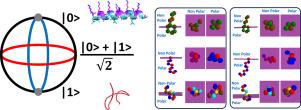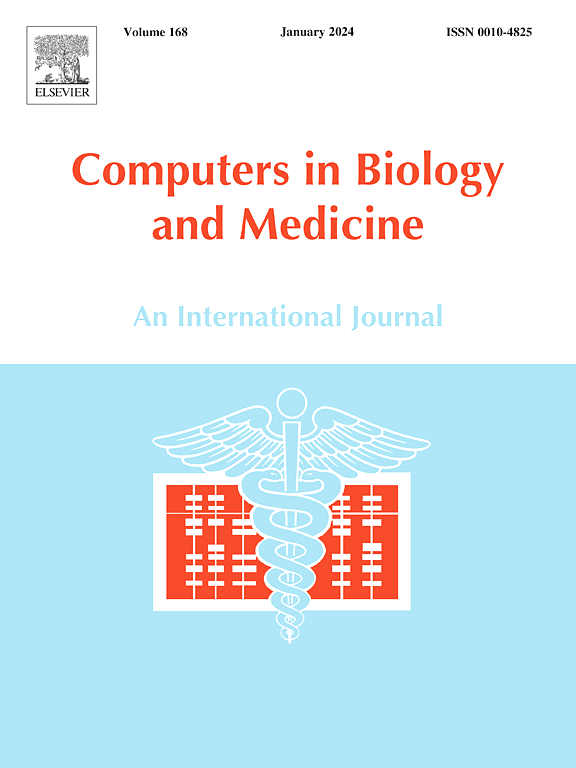Classical Simulations on Quantum Computers: Interface-Driven Peptide Folding on Simulated Membrane Surfaces
IF 7
2区 医学
Q1 BIOLOGY
引用次数: 0
Abstract
Background:
Antimicrobial peptides (AMPs) are crucial in the fight against infections and play significant roles in various health contexts, including cancer, autoimmune diseases, and aging. A key aspect of AMP functionality is their selective interaction with pathogen membranes, which often exhibit altered lipid compositions. These interactions are thought to induce a conformational shift in AMPs from random coil to alpha-helical structures, essential for their lytic activity. Traditional computational approaches have faced challenges in accurately modeling these structural changes, especially in membrane environments, thereby opening and opportunity for more advanced approaches.
Method:
This study extends an existing quantum computing algorithm, initially designed for peptide folding simulations in homogeneous environments, to address the complexities of AMP interactions at interfaces. Our approach enables the prediction of the optimal conformation of peptides located in the transition region between hydrophilic and hydrophobic phases, resembling lipid membranes. The new method was tested on three 10-amino-acid-long peptides, each characterized by distinct hydrophobic, hydrophilic, or amphipathic properties, across different media and at interfaces between solvents of different polarity.
Results:
The developed method successfully modeled the structure of the peptides without increasing the number of qubits required compared to simulations in homogeneous media, making it more feasible with current quantum computing resources. Despite the current limitations in computational power and qubit availability, the findings demonstrate the significant potential of quantum computing in accurately characterizing complex biomolecular processes, particularly AMP folding at membrane models.
Conclusions:
This research highlights the promising applications of quantum computing in biomolecular simulations, paving the way for future advancements in the development of novel therapeutic agents. We aim to offer a new perspective on enhancing the accuracy and applicability of biomolecular simulations in the context of AMP interactions with membrane models.

量子计算机上的经典模拟:多肽在模拟膜表面上的界面驱动折叠
背景:抗菌肽(AMPs)在抗感染中至关重要,并在癌症、自身免疫性疾病和衰老等各种健康问题中发挥着重要作用。抗菌肽功能的一个关键方面是它们与病原体膜的选择性相互作用,而病原体膜通常表现出脂质成分的改变。这些相互作用被认为会诱导 AMP 从随机线圈结构向α-螺旋结构的构象转变,这对其溶解活性至关重要。传统的计算方法在准确模拟这些结构变化方面面临挑战,尤其是在膜环境中,因此为更先进的方法提供了机会。方法:本研究扩展了现有的量子计算算法,该算法最初是为在均质环境中模拟多肽折叠而设计的,用于解决界面上AMP相互作用的复杂性。我们的方法可以预测位于亲水相和疏水相之间过渡区域(类似于脂质膜)的多肽的最佳构象。结果:与在均质介质中进行的模拟相比,所开发的方法成功地模拟了多肽的结构,而且没有增加所需的量子比特数量,这使得它在当前的量子计算资源条件下更加可行。结论:这项研究强调了量子计算在生物分子模拟中的应用前景,为未来新型治疗药物的开发铺平了道路。我们的目标是在 AMP 与膜模型相互作用的背景下,为提高生物分子模拟的准确性和适用性提供一个新的视角。
本文章由计算机程序翻译,如有差异,请以英文原文为准。
求助全文
约1分钟内获得全文
求助全文
来源期刊

Computers in biology and medicine
工程技术-工程:生物医学
CiteScore
11.70
自引率
10.40%
发文量
1086
审稿时长
74 days
期刊介绍:
Computers in Biology and Medicine is an international forum for sharing groundbreaking advancements in the use of computers in bioscience and medicine. This journal serves as a medium for communicating essential research, instruction, ideas, and information regarding the rapidly evolving field of computer applications in these domains. By encouraging the exchange of knowledge, we aim to facilitate progress and innovation in the utilization of computers in biology and medicine.
 求助内容:
求助内容: 应助结果提醒方式:
应助结果提醒方式:


